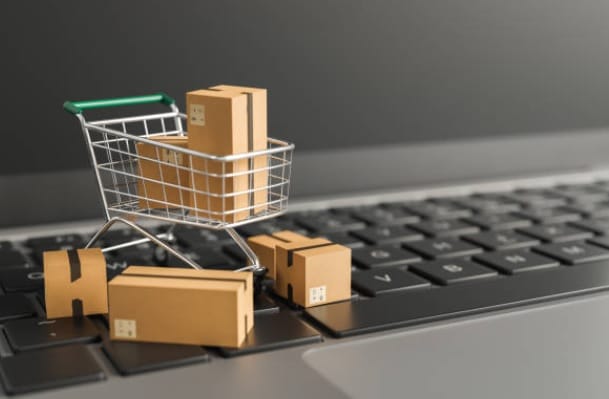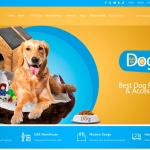
Tips for Automating a Dropshipping Business. Running a dropshipping business can be incredibly rewarding, but let’s face it: juggling product sourcing, order fulfillment, customer support, and marketing can quickly become overwhelming. The good news? Automation can take a lot of those repetitive tasks off your plate so you can focus on growing your business and increasing profits. Let me walk you through some practical tips for automating your dropshipping business.
What Is Dropshipping, and Why Should You Automate It?
If you’re new to dropshipping, here’s the quick rundown: it’s a business model where you sell products without holding any inventory. Instead, your supplier ships items directly to your customers. Sounds easy, right? Well, the daily grind can add up fast: updating inventory, processing orders, handling inquiries…you get the picture.
This is where automation comes in. By using the right tools and strategies, you can streamline your processes, save time, reduce human errors, and focus on the big-picture stuff. Ready to dive in? Let’s go!
Key Areas to Automate in Your Dropshipping Business
1. Product Sourcing and Inventory Management
Keeping your product listings up to date is crucial in dropshipping. You don’t want customers ordering products that are out of stock or priced incorrectly. Use tools like Oberlo, Spocket, or Syncee to automate product imports, pricing updates, and inventory syncing. These platforms connect directly with your suppliers, so everything stays current with minimal effort on your part.
Pro Tip: Set up dynamic pricing rules to automatically adjust your prices based on supplier changes, ensuring your profit margins stay intact.
2. Order Fulfillment
Manually placing orders with your suppliers is time-consuming and prone to mistakes. Platforms like Shopify or WooCommerce can integrate with suppliers to handle order fulfillment automatically. When a customer places an order, the system notifies your supplier and sends tracking information directly to the customer. It’s a win-win for everyone.
3. Customer Support
Good customer service can make or break your business. Automating common inquiries with tools like Tidio, Zendesk, or even a simple chatbot can save you hours each week. For example, you can set up automatic replies for FAQs like shipping times, return policies, and tracking updates.
Pro Tip: Combine automation with personal touches. For complex issues, have a system in place to escalate the inquiry to a human rep.
4. Marketing and Promotions
Marketing is one area where automation truly shines. Tools like Klaviyo and Mailchimp allow you to set up email campaigns that trigger based on customer actions, like abandoning their cart or making a purchase. On social media, use scheduling tools like Hootsuite or Buffer to plan and post content in advance. For paid ads, platforms like Facebook Ads Manager or Google Ads let you automate dynamic retargeting campaigns that show personalized ads to your visitors.
5. Payments and Financial Management
Keeping your finances in check doesn’t have to be a headache. Use tools like QuickBooks or Xero to automate invoicing, expense tracking, and financial reporting. These platforms can sync with your eCommerce store and payment gateways for a seamless experience.
Tools to Make Automation Easy
There are so many tools out there to help automate your dropshipping business. Here are a few favorites:
- Shopify: A go-to eCommerce platform with tons of automation features and app integrations.
- Zapier: Perfect for creating custom workflows between apps (e.g., syncing new orders with your email list).
- ShipStation: Streamlines shipping and handles tracking updates.
Take the time to explore these tools and find the ones that best fit your needs.
Tips for Setting Up Automation Workflows
Automation is all about working smarter, not harder. Here’s how to get started:
- Start Small: Focus on automating one area at a time, like order fulfillment or email campaigns. Once you’ve nailed that, move on to the next area.
- Use Standard Operating Procedures (SOPs): Document your processes before automating them. This ensures your systems run smoothly and consistently.
- Test and Optimize: Set up your workflows and test them thoroughly. Look for bottlenecks or errors and tweak as needed.
- Monitor Regularly: Automation isn’t a “set it and forget it” deal. Check your systems periodically to ensure they’re still effective.
Balancing Automation with the Human Touch
While automation is amazing, it’s important not to lose the personal touch that makes your business unique. For example, use automation to handle routine inquiries, but follow up with a personalized email to thank loyal customers. Think of automation as your assistant, not a replacement for human interaction.
Overcoming Common Challenges
Automation isn’t without its challenges, but they’re manageable:
- Supplier Issues: Delays or miscommunication can disrupt your workflows. Work with reliable suppliers and maintain open communication.
- Over-Automation: Avoid making your business feel too robotic. Keep your branding and customer interactions warm and authentic.
- Technical Glitches: Always test your systems thoroughly and have a backup plan in case something goes wrong.
Final Thoughts
Automating your dropshipping business is all about freeing up your time and energy to focus on what matters most: growing your brand and serving your customers. By leveraging tools and creating efficient workflows, you’ll not only save time but also create a better experience for your customers. Start small, stay consistent, and let automation do the heavy lifting for you.
Ready to get started? Explore tools like Shopify, Oberlo, and Zapier today to take your dropshipping business to the next level!
How to Build the Best Dropshipping Store












